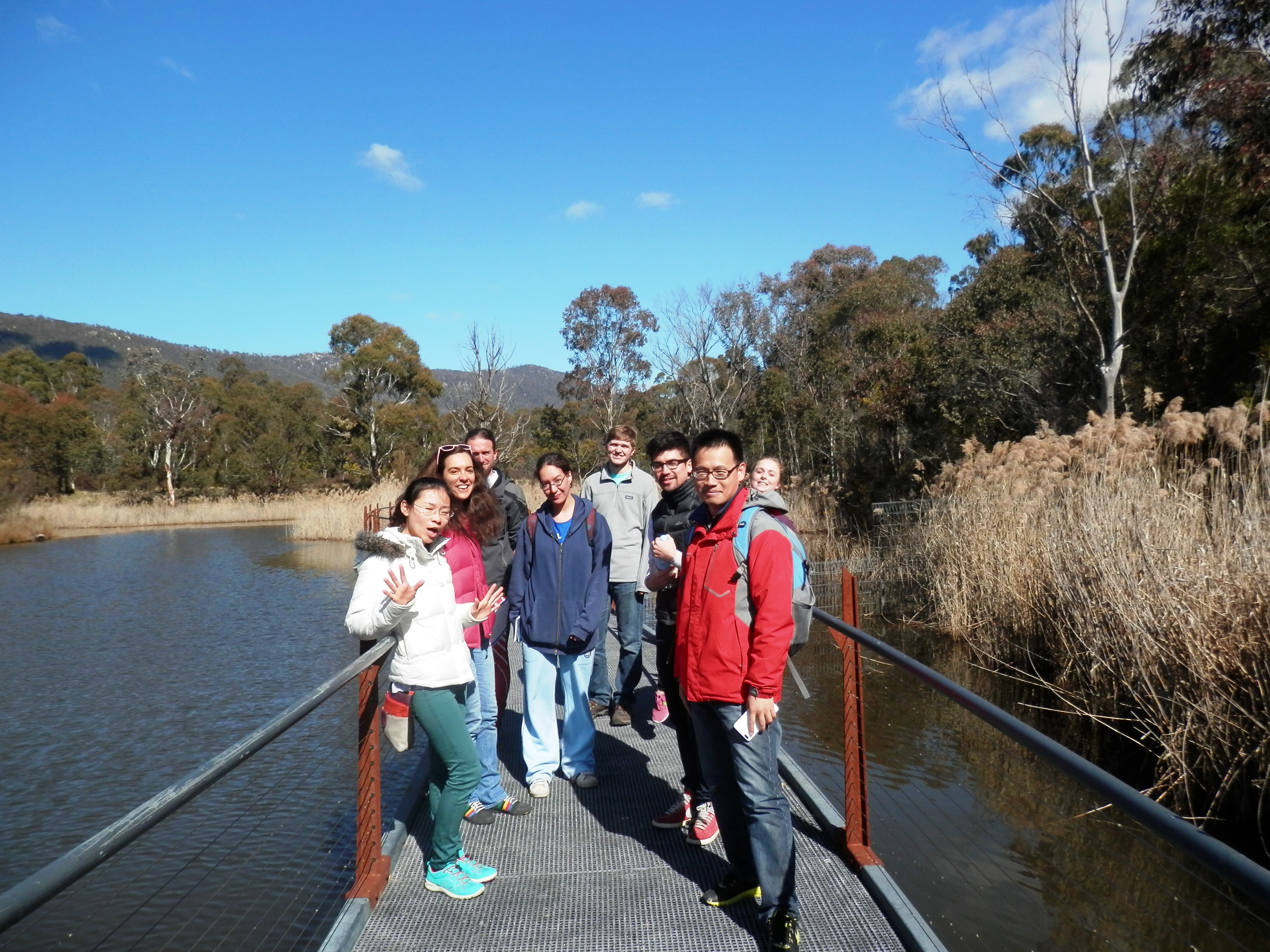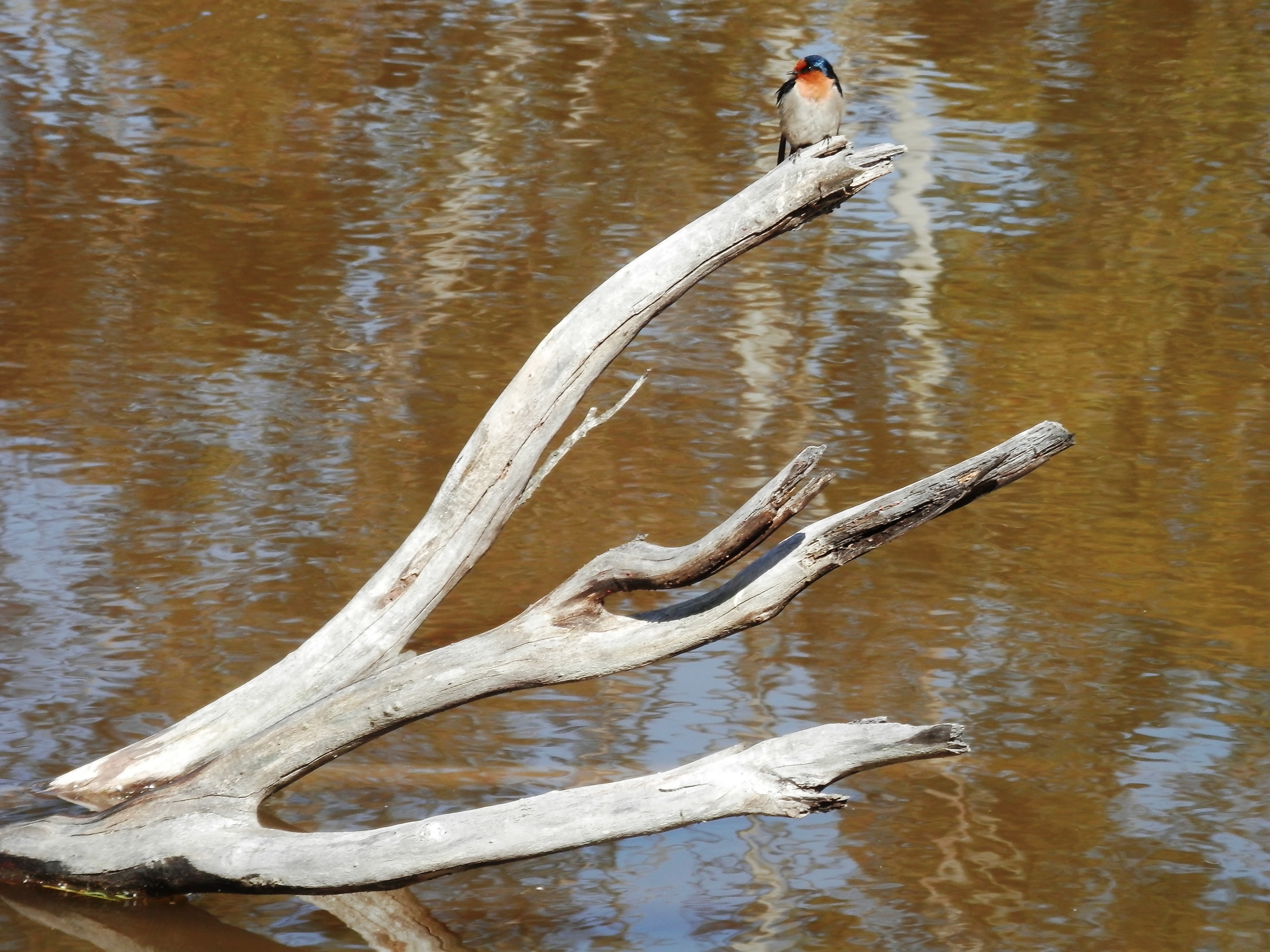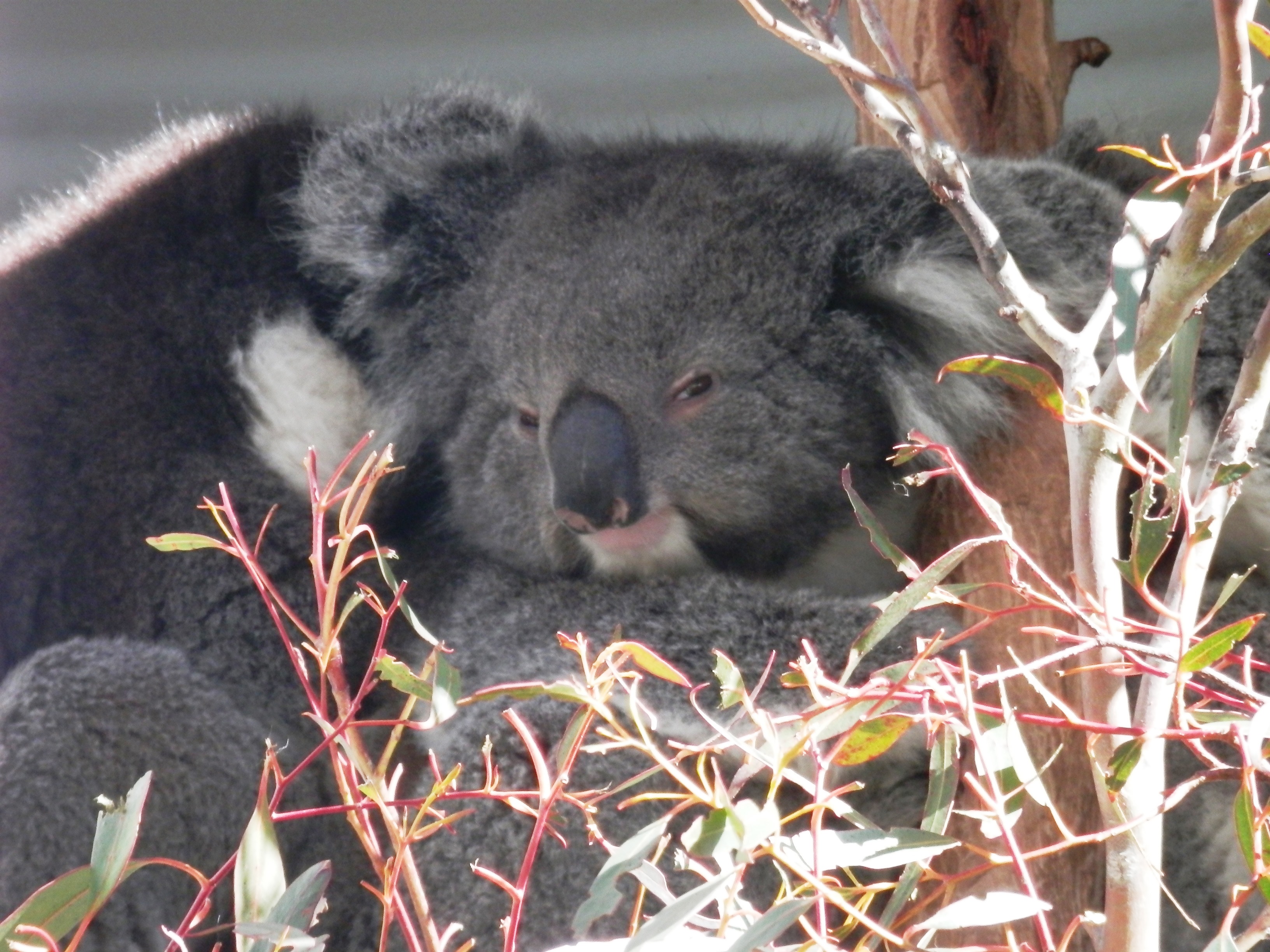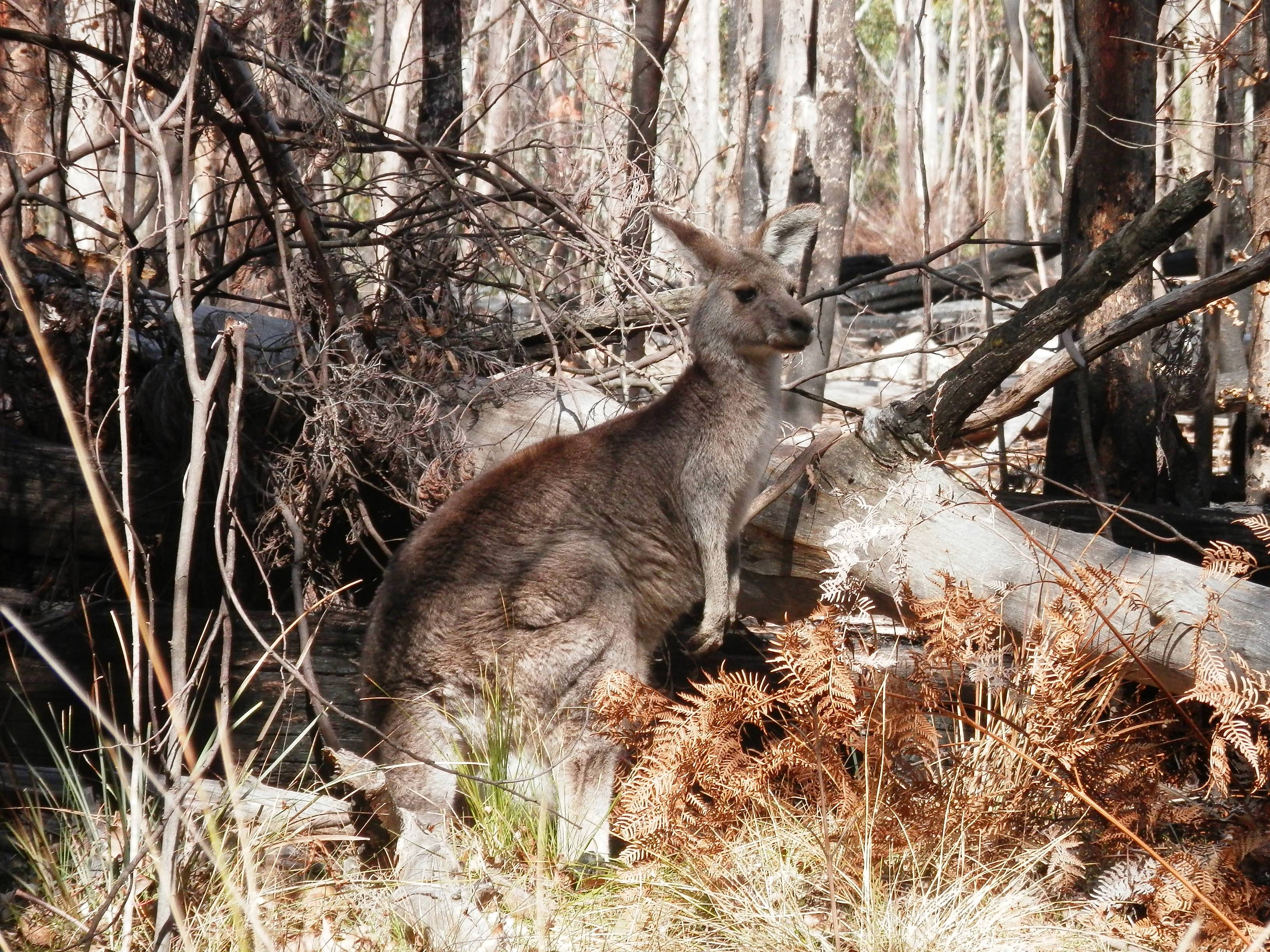Alex Burky Burky
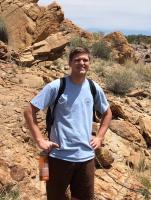
Alex Burky Burky is a student at University of California, San Diego currently completing his research at The Australia National University under Dr. Horvje Tkalcic.
Weeks 5 and 6 ~ Sydney and “Where has the time gone?!”
September 2nd, 2015
Hello Readers!
Sorry I've been bad about keeping this updated on a weekly basis, it seems as if my blog posting frequency spectra has a peak amplitude at around 0.83 µHz (I'll save you all the trouble of converting, that's a period of 2 weeks). So in the past two weeks I've been really in the thick of my project as we try to get some tangible results before I have to head back to the U.S., but I also took a long weekend between weeks 5 and 6 to take a trip to Sydney! My girlfriend flew into Sydney that weekend and we did a whole lot of sightseeing and photo-taking! I got in to Sydney on Thursday night, and immediately upon getting off the bus I was surprised at how much warmer it was than Canberra. I think I left Canberra it was just around 0º C, and when I got to Sydney it was a very pleasant 20º C (so 32º F vs. 70º F, being in Australia has forced me to become well acquainted with the metric system). The weather stayed perfect like this throughout the weekend, but it did rain a little bit on Monday.
On Friday, we went to Bondi Beach, which is supposedly "The Beach" in Sydney. The weather was absolutely perfect, and I regretted not bringing any swimming gear, as there were quite a few people in the water, especially surfers. The beach is nestled into a cove, and there are cliffs that rise away from the beach on either end. Inland from the beach there a dozens of shops and restaurants that line the street, and there are resorts on the cliffs on either side overlooking the Pacific. It was really cool being able to look back towards the U.S. from the other side of the Pacific for once!
Here I am standing on a grassy knoll above the beach:

We then walked south along the coastline for a few kilometers, and the path weaves in and out of small coves along spectacular rocky cliffs. The views were breathtaking, and I couldn't help but think about the geology of the dipping beds of the coastal cliffs.
Here is a picture of one of the inlets, just look at those beds dipping to the west!

After spending a few hours at Bondi, we decided to head back into the city and go to "The Tower Eye," the fifth tallest structure in Australia, to get a view of the city and hopefully get a sense of where everything was. Once again, we were treated to absolutely breathtaking views, and I couldn't help but admire the world's largest natural harbour from this vantage point.

Later that evening, we went to the Nightmarket in Chinatown and sampled all sorts of different Asian foods. By the way, Australia's Asian food really puts America's to shame (or at least by my standard it does). I think this is owed to the closer proximity to Asia, and the larger population of Asian peoples here.
On Saturday, we went to the opera house twice, once in the morning, and then later on in the evening to see an actual opera performance! We saw the opera "Turandot," which was about a ruthless princess who challenged potential suitors with three riddles. If the suitors failed to answer her riddles correctly, they would be executed. So one daring prince felt like he was up to the challenge, and when he got all 3 questions right the princess was mortified. She begged her father to call off the marriage because she didn't want to marry him, but he refused. Seeing that the princess didn't love him, the man decided to give the princess a riddle of his own. If she could discover his name by sunrise the next morning, he would allow himself to be executed so that the princess wouldn't have to marry him. The ending was pretty interesting, and I won't spoil it for any of you!
Back to the pictures... here's one of me at the opera house in the day!
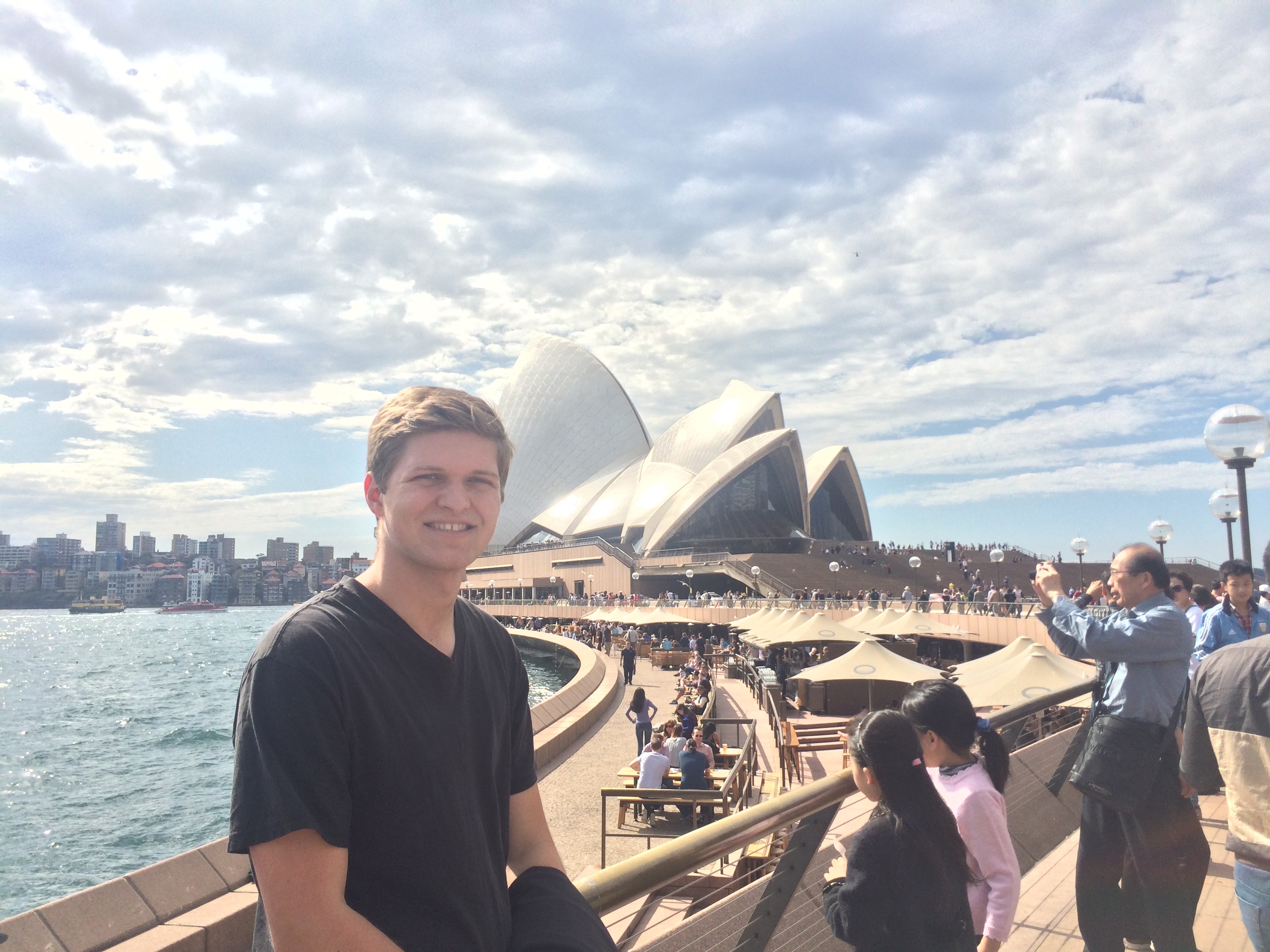
and... here's the opera house at night!

The opera house itself was worth the trip to Sydney. Of all the building I've ever seen in my life, I can easily say that this one was my favorite. It's so much bigger than I imagined, and it's perfectly situated jutting into the harbor on the edge of a peninsula. Every direction you look while you're at the opera house you get a panoramic view of the city and its surroundings. If you ever have the chance to see this building in your lifetime, I 100% reccommend it.
On Sunday we went to the zoo and the aquarium. We woke up at the crack of dawn to have breakfast with koala bears, and we had the opportunity to get as close as physically possible to koalas without actually touching them (in the past you could hold koalas, but New South Wales recently passed a law making it so koalas can only be handled by zoo staff).
Here's the koala bear that I was able to get up close and personal with!

In addition to the koalas, there were kangaroos, tasmanian devils, wallabies, wombats, kookaburras, echidnas, bandicoots, buterflies, snakes, and many more interesting animals!
Here's a cassowary, the third largest species of bird on Earth (behind the emu and ostrich).
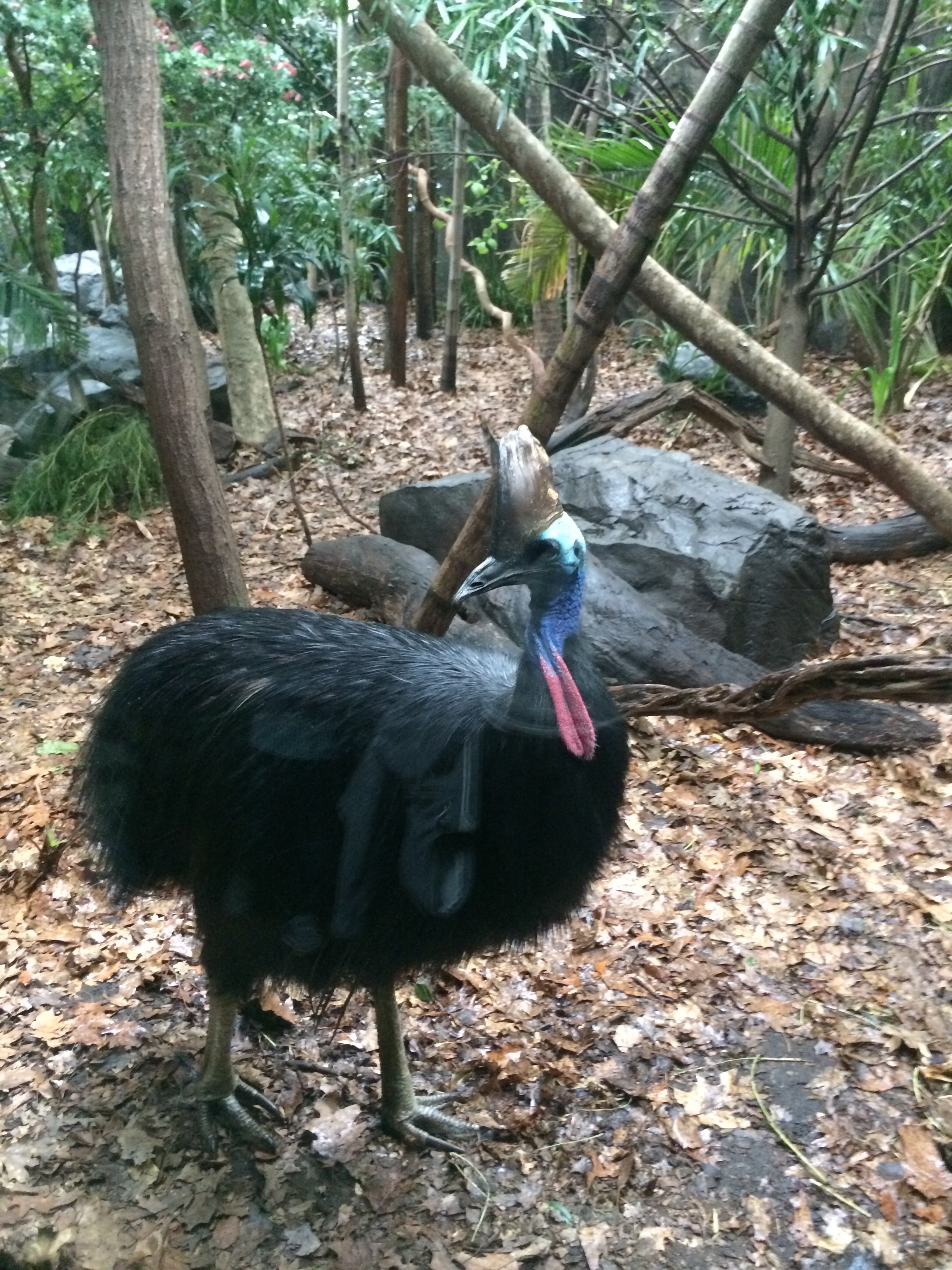
This is Rex. He's a monstrous saltwater crocodile. (5 meters long!) According to the zookeeper, there was a community in Northern Australia where dogs were mysteriously disapperaing. The locals suspected that it was a crocodile, and they found out that the culprit was Rex. A local crocodile farm caught Rex, and they were amazed at how well preserved he was. Crocodiles typically fight each other a lot, and this leads to them having broken claws and teeth, scratches, etc. Well when they found Rex he was completely injury free, which meant he either a) never got in any fights (unlikely) OR b) he won every fight he was ever in (likely). The crocodile farm figured that a croc this good should be bred to produce strong offspring, so they decided to put Rex together with a female crocodile in the hopes of getting them to breed. Well, instead of mating, Rex decided to kill the female. Seeing that this crocodile was a real menace, the farmer thought, "what if we pair Rex up with the meanest, toughest female croc we have?" They paired Rex up with such a female, and the two immediately fought and displayed aggressive behavior toward one another. So then the farmer decided to put them in two separate pens, one right next to the other, so that maybe the two crocodiles would acclimate to one another. After a few weeks, Rex and the female would sit right on the edge of their pens so as to be right next to one another. The farmer interpreted this as the crocodiles getting along, so he decided to let them have a shot at breeding. Well, once again, Rex killed her. Seeing that this crocodile was not fit for farming, and it was certainly not safe to unleash upon the wild, they decided to send it to the zoo!

On Monday, we went to the museum and saw lots of fossils, and a vast mineral collection. I learned a lot about Australia's abundant mineral resources, and was dazzled by some of the largest gold nuggets, tourmalines, garnets, and beryls I've ever seen!
Here I am being awestruck by the mighty Tyrannosaurus Rex. Probably just as fearsome as Rex the crocodile.

After I got back from Sydney, it took some time to readjust to work and get back on track with my project. I met with Hrvoje and we went over the results of my synthetic experiment and started brainstorming about the poster. Marija and I ran the Bayesian inversion for real data from an event in 2006, and when we found the results we were a bit puzzled. The Bayesian Inversion inverts for the moment tensor elements, but it also inverts for the centroid location of the event. The centroid location is restricted to a reasonable "box" of space in the inversion (based on the published centroid location), and we would hope that the inversion would produce a centroid location somewhere within this "box." When we looked at the results though, we found that the inversion converged on the boundary of the box, which was a rather unsatisfying result since we can't really constrain what the actual location was in that case. In order to resolve this, we had to compute green's functions for more space in order to increase the volume of our "box" in the hopes of finding a centroid location somewhere within it. That has been the goal for the majority of this week as well, and earlier today I started the inversion running utilizing a wider range of green's functions. Hopefully we'll find a solution inside this larger box!
Aside from getting the inversion running for real data, I have continued to run synthetic experiments in the background to establish some justifaction for limiting the amount of stations we use in our inversion. One of the experiments that I did was to run the inversion for every possible combination of a set of 5 stations, and then plot the results in terms of percents Double Couple, Compensated Linear Vector Dipole, and Isotropic versus the number of stations. Conveniently, as the number of stations increased, the solutions trended towards a similar value for these components. I'll share those plots, and hopefully some plots for real data, in my next blog post! (I forgot to send them to myself from my work computer :/ )
Well that's it for now! I can't believe that I've got less than 3 weeks left here in Australia! It's been such a blur!
Weeks 3 and 4 ~ Abstracts and Sightseeing
August 17th, 2015
Hello Readers!
Sorry I haven't updated this in a while, I was preoccupied with scrambling to get my AGU abstract submitted week 3, and then we planned a sightseeing trip for last weekend so I figured I would just wait to post until after that since I would be stocked up on fun photos. So here's what I've been up to:
Week 3: As I mentioned earlier, this week was devoted almost entirely to preparing and submitting my AGU abstract. I needed a great deal of advising from Professor Tklacic and Marija since I was still getting a feel for my research. We succesfully composed a fairly "open-ended" abstract, where we listed background information, method, and goals. Unfortunately we couldn't really say much about results, since we have yet to have any! The over-arching tone of the abstract was sort of, "here's what we're doing, here's why we're doing it, and we'll let you know what we find once we've done it." Once we finally got it submitted things seemed to go from 100 miles per hour (or more appropriately kilometers per hour) down to a manageable walking pace. After submitting, I resumed my process of calculating Signal-to-Noise ratios for waveform data from the largest event we're using in our study. I also began fiddling with GMT to try and make a topographic map of the study area, but actually finding topographic data in a .grd format took more time than I expected. Other than that, this week was mostly devoted to getting work done on my project.
Week 4: Now this is where the fun starts. This week, I met with Marija and Professor Tkalcic to discuss what our plans were moving forward with the project, and Professor Tkalcic proposed that I do a synthetic experiment to see how the results of our Hierarchical Bayesian Inversion changed as a function of maximum azimuthal gap. Since the Bayesian Inversion is so computationally intensive, we need to pick an appropriate 10 stations of the 30 available to actually use in the inversion (just as a side note, the inversion with 10 stations takes about 2 weeks to run!). By looking at how the solution varies as a function of azimuthal gap, we should be able to determine if there is an optimal azimuthal coverage to use in our inversion. To backtrack a little, I'd like to explain a simple example of what a moment tensor solution actually is (to help the reader better understand why azimuthal coverage is important). As you can see in the photo below, when an earthquake occurs on a fault plane, certain areas are compressed while other areas are dilated.
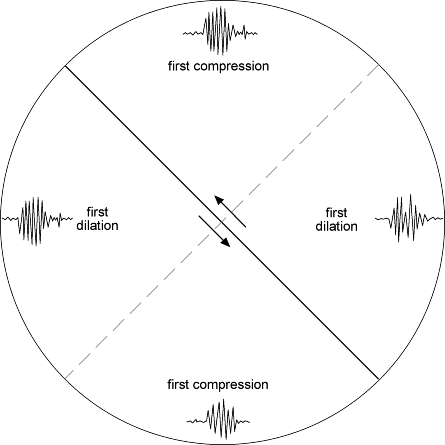
These "first motions" can be detected on seismometers, and if you have enough seismometers surrounding your earthquake source, you can begin to get a picture of which areas were compressional and which were dilatational. If you plot these first motions on a circle according to geographic location, you can draw great circle arcs to divide the circle into quadrants of compression and dilatation. What is truly powerful about this, is the fact that one of the two lines you have drawn actually represents the physical fault plane and its geometry! Deciding which line is the actual fault is fairly easy if you have an idea of the geologic setting/pre-exisitng faults where the earthquake occured. Now what does this all have to do with azimuthal coverage? Well, if you imagine a scenario where an earthquake occurs, but all of the seismometers are in a thin 45 degree band to the south of the earthquake, you most likely won't be able to produce a complete moment tensor solution since all of your first motions may very well be compressional or dilatational! By having a complete (or nearly complete) 360 degree array of stations around your earthquake source, you can accurately describe your fault plane geometery.
Forgive my digression, so given the challenge of running this synthetic experiment I immediately got to work writing a code that would calculate the maximum azimuthal gap between chosen stations. After a day or two of struggling with UNIX commands, I finally wrote a code that I am very proud of. The code takes a user defined input of 10 stations (so I simply type which combination of 10 stations I would like to use as a trial), retrieves their latitude and longitude from SAC files, plots the array + earthquake location on a GMT map, calculates the azimuthal gap between each station and its nearest neighbor, and outputs the calculated gaps along with the corresponding station names to an easy to read .txt file. Once I had this done, I was quickly able to produce 20 different combinations of 10 stations to use in our synthetic experiment. For the rest of the week, I began running the Inversion with the chosen combinations, and by fixing certain parameters of the inversion we've been able to complete one inversion every 45 minutes or so. This will carry on into the beginning of this week, and then we'll go over the results of the synthetic experiment and decide where to go from there!
This past weekend was deserving of an entire blog post on its own, but I'll just clump it all into one mega-post while I'm here. On Saturday we celebrated India's Independence Day by having a curry cook-off at Professor Tkalcic's house. Ajay, the other intern from India, was the main chef for the evening, and he prepared vegetables, a chicken curry, and a kidney bean curry. The vegetables were quite mild, the chicken curry was a little spicy, and the kidney bean curry was deceptively hot. The first few spoonfuls didn't seem to be too hot, but then about 5 minutes later my face was sweating and I was reaching for any bread and water I could find. Nita, one of the graduate students from India, prepared a fish curry, which was just as hot, if not hotter, than the kidney bean curry. We also had sides of naan bread, roti bread, and basmati rice, to help offset the intense heat. For dessert, we had some Indian milk candies, as well as some sponge cake filled with cream. We had intended for Jo, one of the graduate students from England, to cook a British version of curry and Yorkshire pudding for us so we could compare the Indian vs. British curries side-by-side, but she was sick that weekend (we all suspected that she was actually just bitter since India was celebrating its independence from Great Britain!). Post-colonialism grudges aside, the meal was excellent and we all left with full bellies and open sinuses.
On Sunday, we made a trip out to Tidbinbilla Nature Reserve to see some of the local wildlife. At this point I'll let the photos tell the story:
Here is a picture of our group walking over a pond where we saw a platypus! It was a lot smaller than I expected, but still absolutely amazing to see. (Unfortunately my pictures of the platypus don't do it justice - it looks like a small branch floating in the water)
Here is a bird that I have yet to identify sitting on a log.
Here is a koala bear shooting a glare at us - we probably woke it up!
Here's a kangaroo that was standing just a few meters away from us! I've been so surprised by how close you can get to the kangaroos here, you can even buy kangaroo feed and feed them by hand (I'll have to try that soon!)
And here it is jumping away from us - probably got too close.
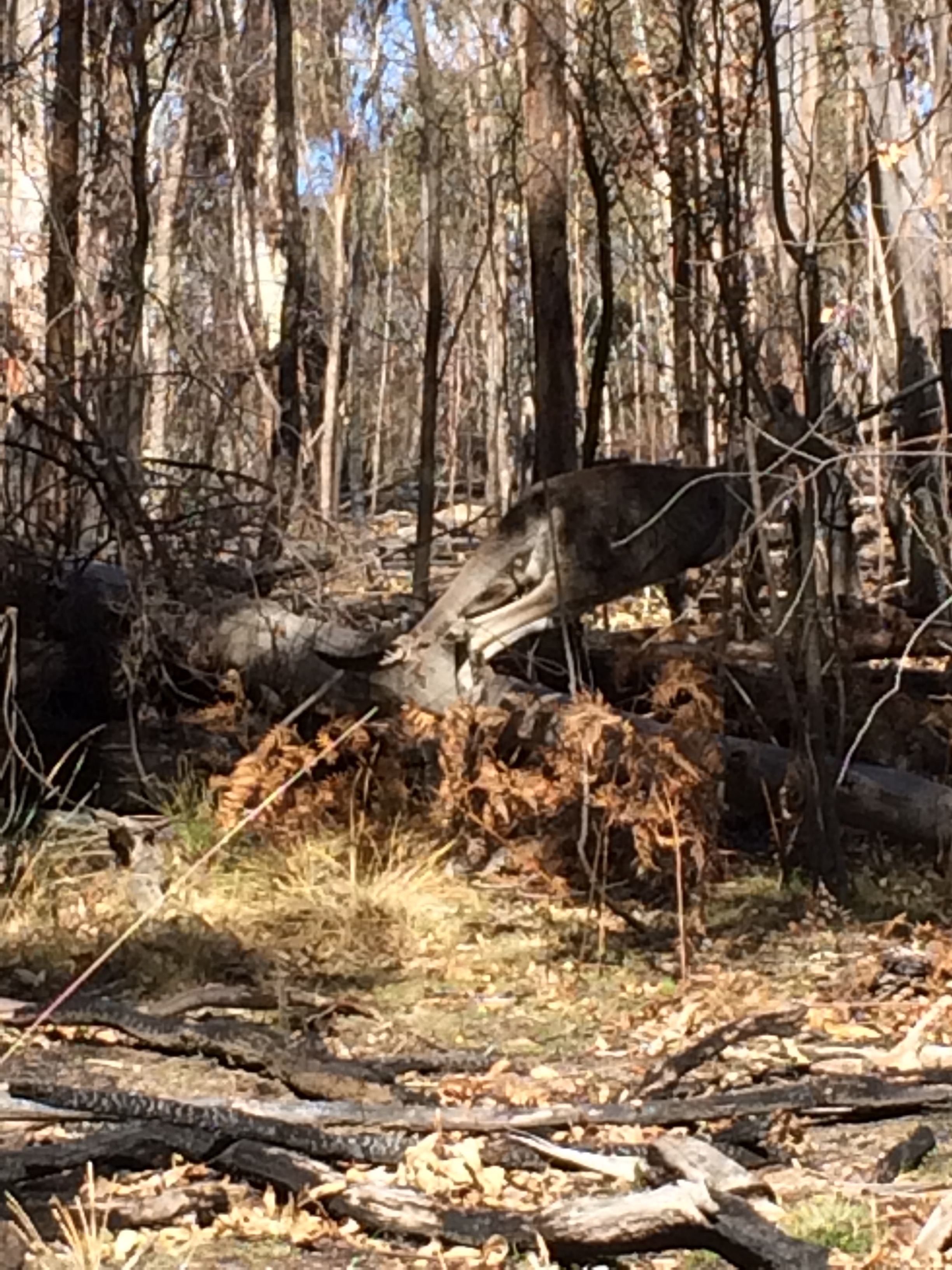
On our way back from the nature reserve, we stopped at the Tidbinbilla Deep Space Complex to have lunch and check out the massive radar dishes. I also learned that this is the station where the video feed and various images from the Apollo mission were first received, and this is where the recent pictures of Pluto were first received! There was a nice museum that had all sorts of information about our endeavours in space, and how the Tidbinbilla Deep Space Complex has played a part in all of our major space missions.
While we were at the Tracking Station, we stopped and had lunch and I managed to get a photo of this Magpie who was keeping us company. I also had the chance to hear about a terrifying phenomenon known by the locals as "swooping." Apparently, in the late winter-early spring (so pretty much for the next month that I'm here), the Magpies begin hatching their young. Magpies are extremely territorial birds, and when people walk or cycle into their territory, sometimes they will swoop down and attack with their beaks to protect their young. They also seem to know where peoples weak spots are, as they manage to sneak in just under peoples' bicycle helmets and clip their ears/neck. One of the graduate students has been victim to this "swooping" a few times, and has been bloodied up by the wrath of the Magpies. So for the next month I'll be on the lookout for Magpies aiming for my neck, and hopefully I won't fall victim to swooping.
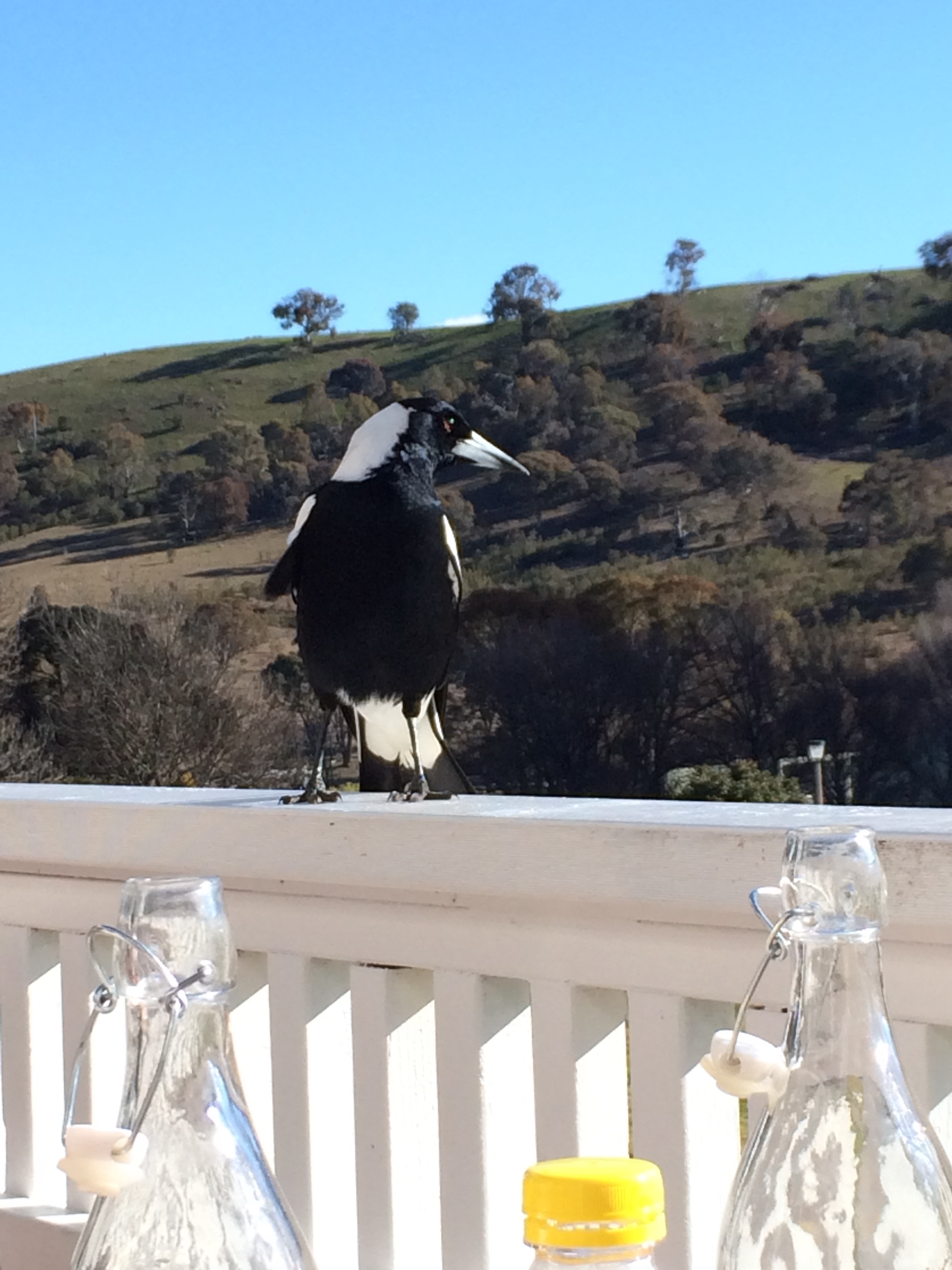
Well, that's all for now! If you made it this far, thanks a bunch for reading and I hope you were entertained! This upcoming week I plan to finish up that synthetic experiment, and then I'm leaving Thursday night to take a long weekend trip to Sydney! Be on the lookout for lots of pictures from my time there!
Cheers!
First Weeks at ANU ~ A Sprint
July 31st, 2015
Hello All!
I finally arrived in Australia last Sunday (the 19th), and I was greeted at the airport by one of Professor Tkalcic’s graduate students, Marija. The first thing that struck me upon getting on the ground was how cold it was! For some reason it hadn’t really sunk in that I was heading into winter until I had the wonderful, “my nose and ears are about to freeze off” feeling. After getting picked up from the airport, Marija gave me a brief tour of the city and we went and got lunch. The university is located right next to downtown, and there are lots of shops and restaurants as well as tourist-y locations that I hope to visit soon! My residence is about 15 minutes away from the university by car, and the bus has been an efficient means of getting to and from the school. Professor Tkalcic was out until Wednesday of my arrival week, so Marija told me to take Monday and Tuesday off to settle in and adjust to the new season and time zone. I took those few days as an opportunity to do some grocery shopping and exploring, and I was amazed at how diverse the wildlife is here! Within 24 hours of arriving I saw kangaroos and nearly a dozen different species of colorful birds.
Here are a couple of cockatoos I found near my house (they’re really beautiful but they’re also VERY loud in the morning - actually all of the birds are very loud in the morning…)

I would’ve taken a picture of the kangaroos I saw but they were kind of far away so I couldn’t get any good shots, but I will definitely have some kangaroo pictures by the end of my time here!
And here is a picture of Telstra tower, one of the landmarks of Canberra:
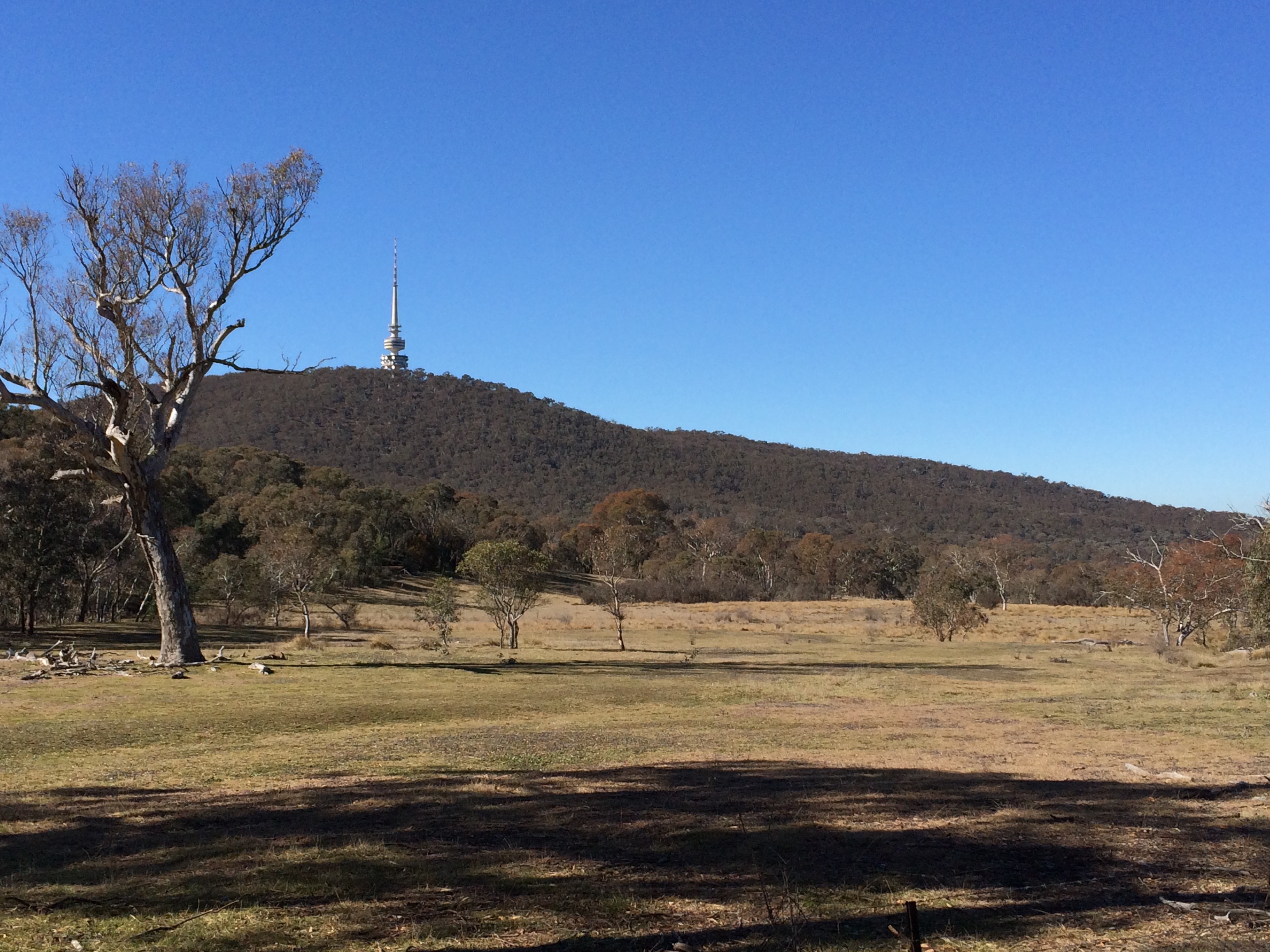
Some interesting things that I observed within my first few days of arriving: In Australia, they don’t really have “strip malls” like we have in the U.S, and the grocery stores are found in an indoor plaza along with various restaurants and other shops. Also, being from California, I’m used to seeing something priced at say, $9.99, and having to pay something like $10.78 for it. Conveniently, here in Canberra, the price you see is the price you pay, and they even include a “rounding” on receipts so that all prices are rounded to the nearest 5 cents (no pesky pennies!). Lastly, seeing cars driving on the left side of the road has been very tough to adapt to. My instincts about which way to look before crossing streets are betraying me, and I’ve had to stop and think a lot more at intersections to try and figure out where cars are moving (yes this has attracted me some stares and looks from drivers).
When I finally started working on Wednesday we hit the ground sprinting seeing as AGU abstract deadlines are quickly approaching! The group that I am working with is quite diverse (there actually aren’t even any native Australians!), and there is another intern from India that I am sharing an “office” with. (It’s more of a computer lab) Luckily he already has a masters degree, so he has been an invaluable resource when it comes to programming questions. The project that I will be working on consists of calculating moment tensor solutions using a Hierarchical Bayesian Inversion on an event in the Geysers geothermal region in California. The advantage of this technique is that it creates a model with more realistic parameter uncertainties by factoring in aspects such as noise. In order to do this, I will be working with a wide variety of computing tools including: SAC, GMT, Matlab, Fortran (although most of the Fortran codes are already written, I just make minor tweaks to them), and most importantly UNIX, lots and lots of UNIX.
We have event data in the form of SAC files from 30 stations around Northern California/Southern Oregon, and my first task has been to compute Signal to Noise ratios for a particular frequency band in these waveforms. Since the Bayesian Inversion is computationally intensive, we want to narrow down our number of stations to something around 10, so we want to find an ideal combination of stations (hence looking at the quality through Signal/Noise ratios). After computing these ratios, and ranking them, I then began to play around with different combinations of stations in a linear inversion, which is much less computationally demanding. I am still running different combinations and trying to find the ideal array in terms of azimuthal distribution (we want a good ~circular spread), distance from the event, signal quality, and quality of fit. This phase will likely keep me busy for the upcoming week while I also scramble to write an abstract within the week! (luckily I’m getting lots of help from Marija and Professor Tkalcic on this!)
And here are some fun figures I've produced. These are some GMT plots that I made which show the locations of the stations in our study region. (I still need to add a star for the actual event location...)
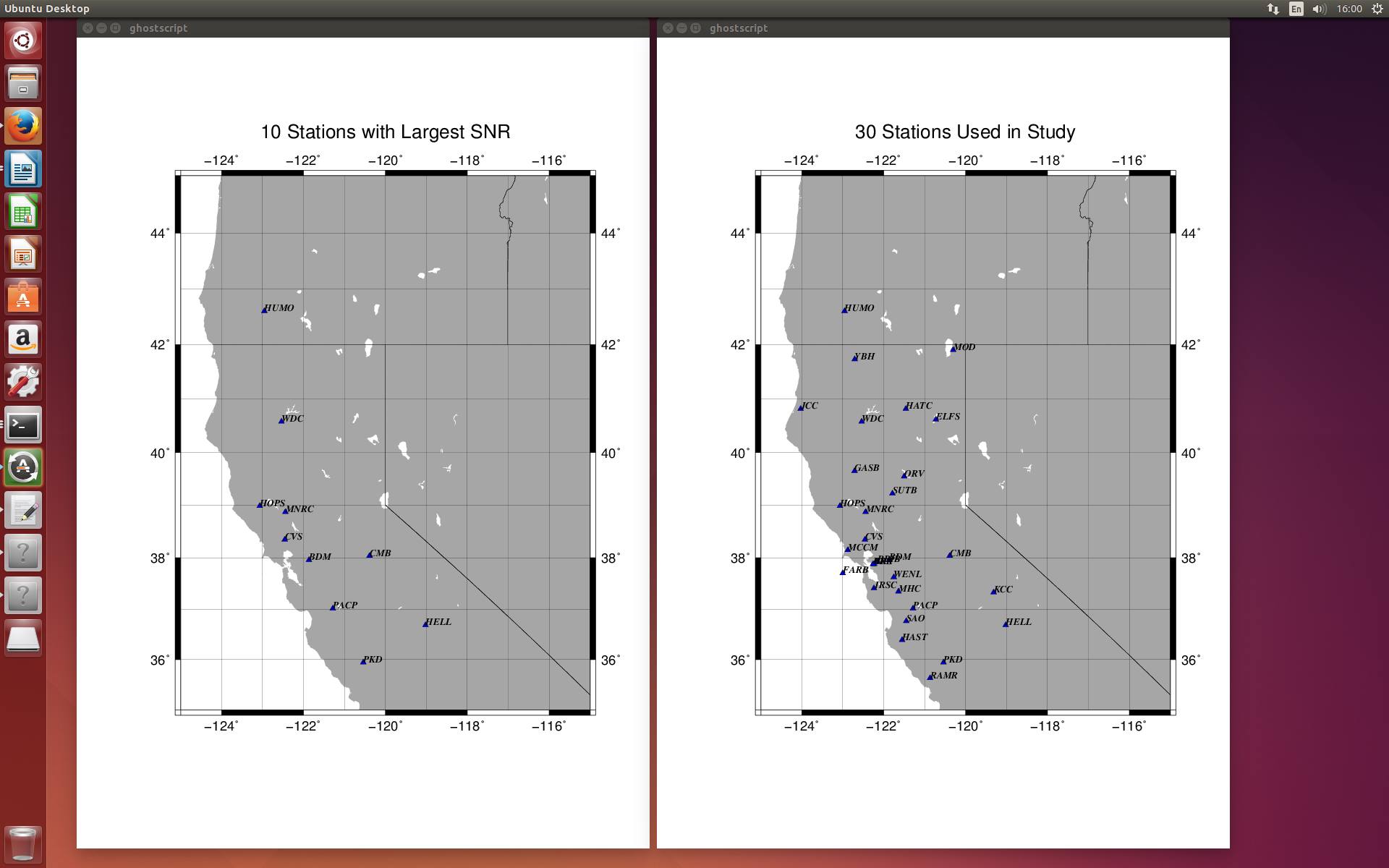
And here are some moment tensor solutions computed from a linear inversion (note that the 30 station and 10 station arrangements produce quite different solutions, I'll get back to you on why that is when we figure it out).
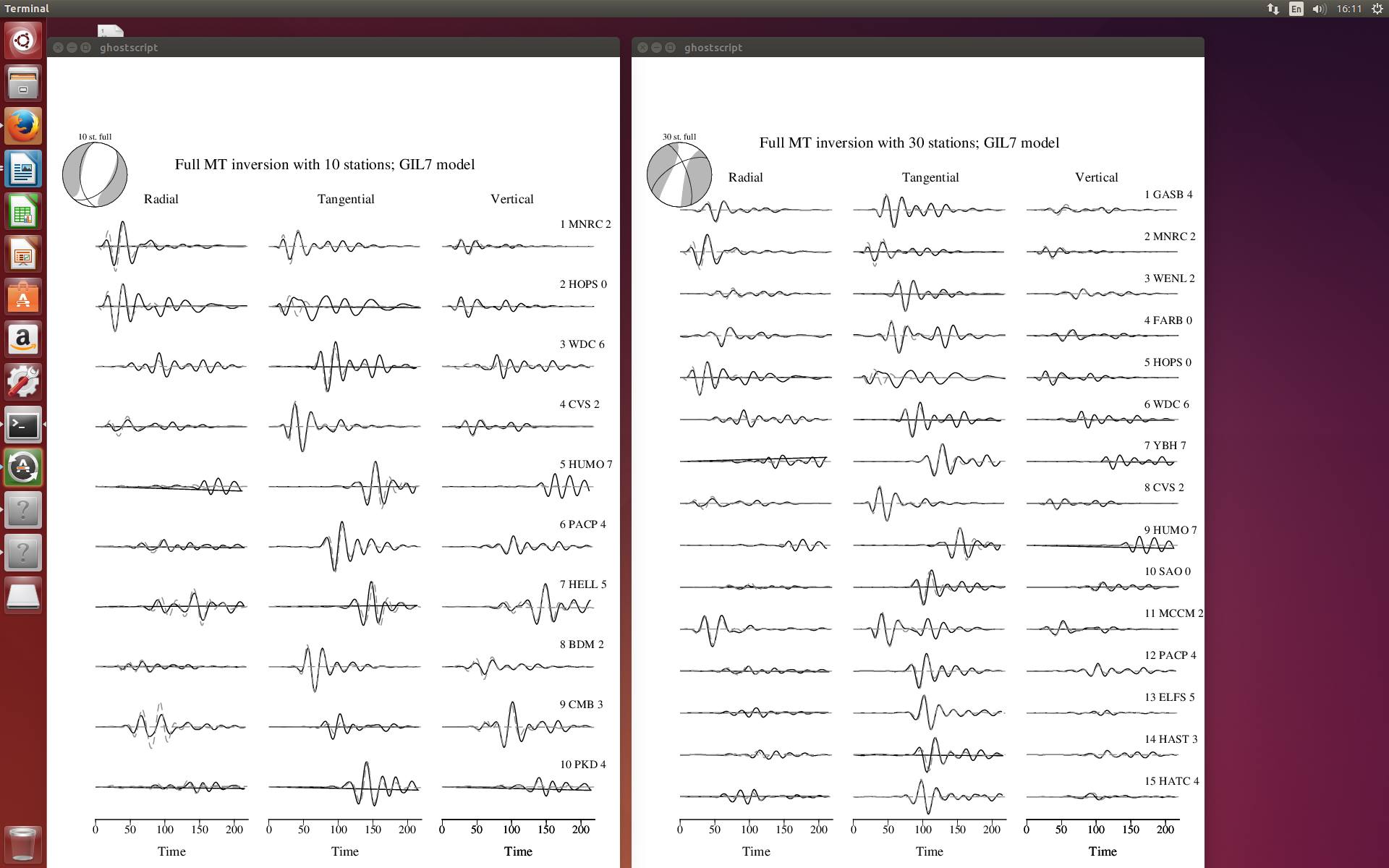
Well that’s it for now, stay posted for much more to come!
Cheers!
Greetings from Socorro, New Mexico!
May 28th, 2015
Ben keeps turning off my numlock, it's quite frustrating. I'm also not used to eating this much food, it's a good change from ramen, bread, and hot dogs. Socorro is quite lovely, the weather has been nothing short of perfect, and it's too bad that I have to go back to school next week (although I really can't complain about going back to sunny San Diego...). I'm excited to ship off to Australia and start working on research, and I'm incredibly grateful for having this opportunity! Stay tuned for more!



